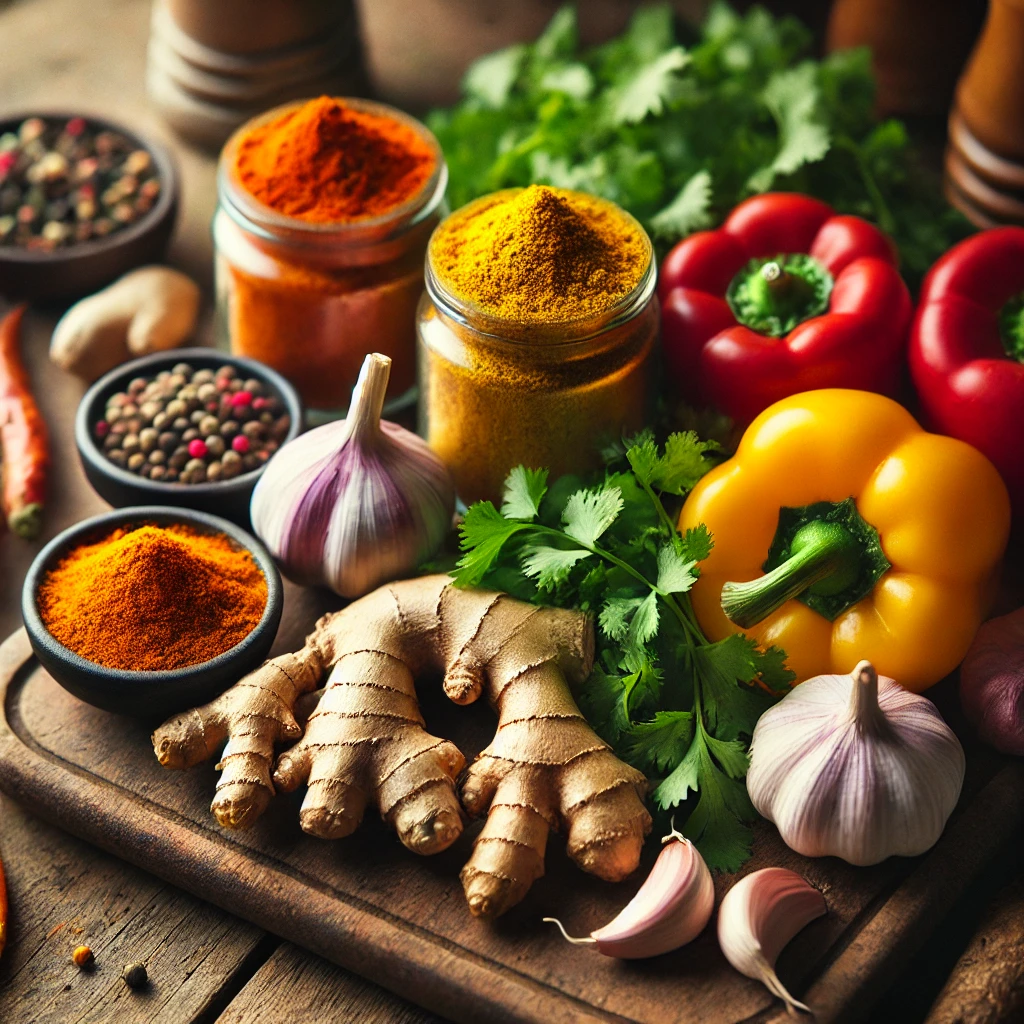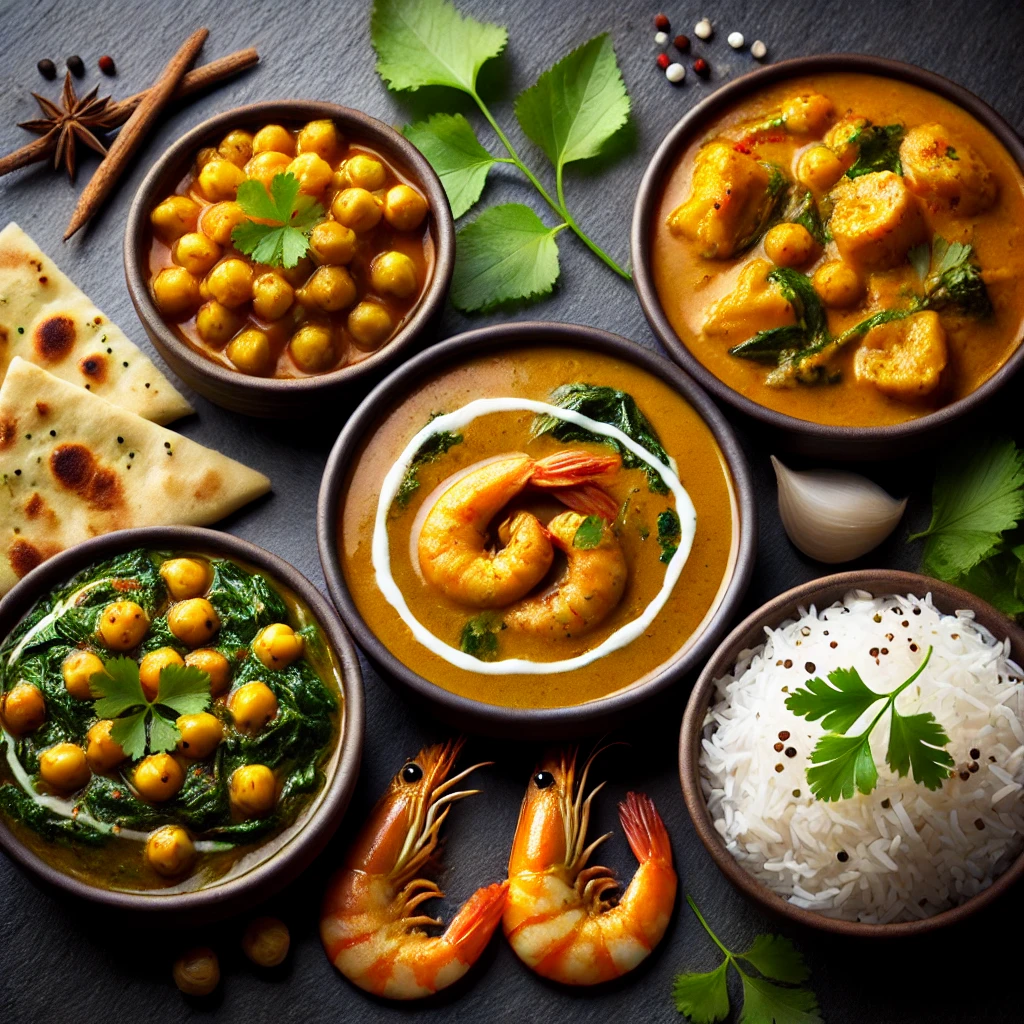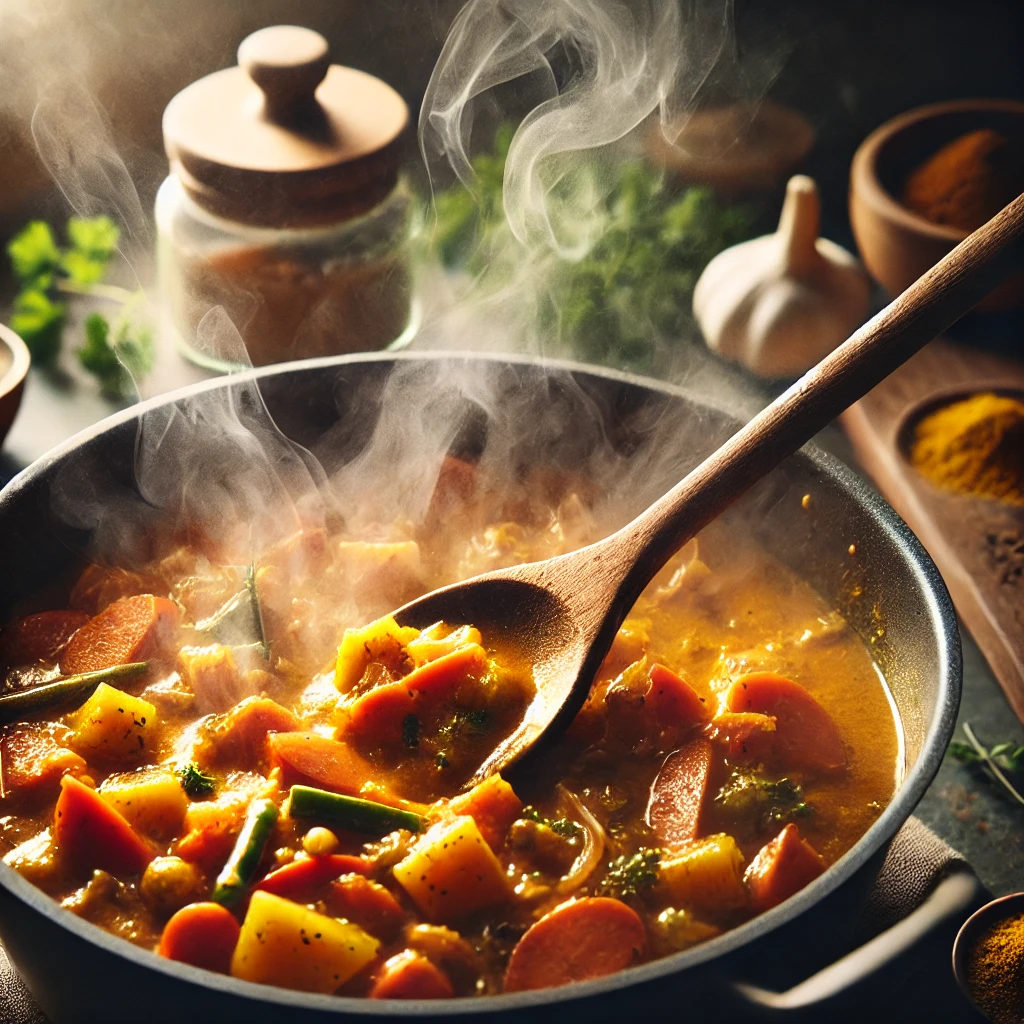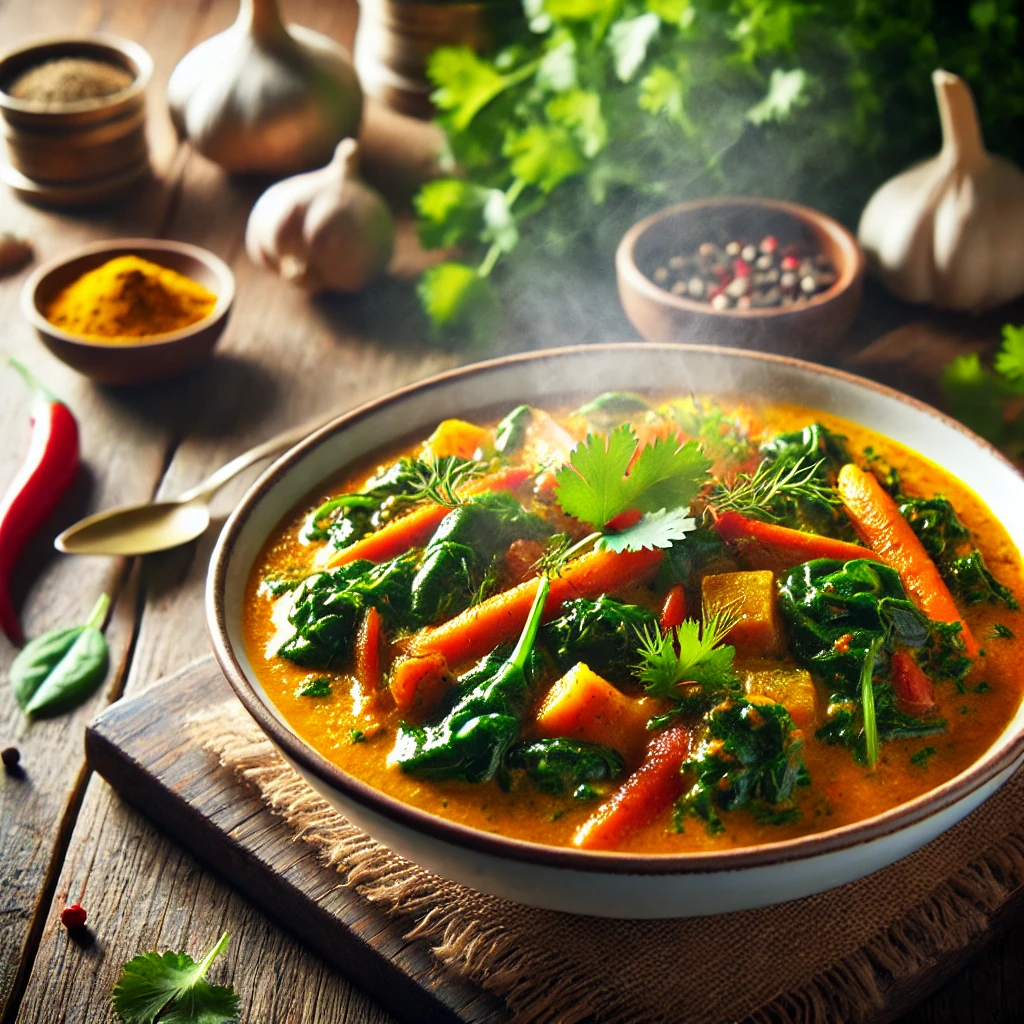Homemade curry is not just a delightful meal bursting with flavor, but it also packs a nutritional punch that can support a healthy lifestyle. Unlike its store-bought or restaurant counterparts, homemade curry allows you to control the ingredients and portion sizes, making it a much healthier option. But how exactly does this dish contribute to your overall health?
In this article, we’ll break down the health benefits of homemade curry, highlight the nutritional value of key ingredients, and explore tips for making it even healthier. Whether you’re a seasoned chef or a home-cooking enthusiast, this guide will inspire you to create your own curry masterpiece.
Why Homemade Curry is Healthier Than Store-Bought Options
Store-bought curries often come loaded with high levels of sodium, unhealthy fats, and artificial preservatives. These additives can contribute to weight gain, high blood pressure, and other health issues when consumed regularly. By making your curry at home, you can avoid these hidden ingredients and tailor the recipe to your dietary needs.
Here’s why homemade curry stands out:
- Customizable Ingredients: Control the amount of oil, salt, and sugar.
- No Preservatives: Freshly prepared dishes are free from chemicals and additives.
- Nutrient Retention: Cooking from scratch helps preserve the nutrients in vegetables, meats, and spices.
For example, many store-bought sauces contain trans fats to prolong shelf life. By using fresh oils like olive oil or avocado oil in your homemade curry, you improve the fat quality, benefiting your heart health.
Nutritional Powerhouses in Homemade Curry
The health benefits of curry largely depend on the ingredients you use. Here’s a breakdown of some key ingredients and their health benefits:
1. Turmeric
Turmeric is the golden gem of most curry recipes, containing a compound called curcumin. This natural antioxidant has anti-inflammatory properties that can reduce the risk of chronic illnesses like arthritis, heart disease, and even cancer.
2. Garlic and Ginger
Both garlic and ginger are renowned for their medicinal properties:
- Garlic can help lower cholesterol and improve heart health.
- Ginger aids digestion, reduces nausea, and has powerful anti-inflammatory effects.
3. Tomatoes
Fresh tomatoes are packed with vitamin C, potassium, and lycopene, which contribute to heart health and lower the risk of certain cancers.
4. Vegetables
Curry is a versatile dish that allows you to add a wide range of vegetables, such as:
- Spinach for iron and folate.
- Carrots for beta-carotene and improved eye health.
- Bell peppers for antioxidants and vitamin C.
Adding vegetables not only boosts the fiber content but also reduces the calorie density of the meal, making it more filling and nutritious.
5. Spices
The spices in curry, including cumin, coriander, and cardamom, are rich in antioxidants and support digestive health. They also add depth to the flavor without the need for extra salt or sugar.
Health Benefits of Homemade Curry

A balanced homemade curry can provide the following health benefits:
1. Boosts Immune Function
The combination of spices like turmeric, ginger, and garlic strengthens your immune system by fighting inflammation and oxidative stress.
2. Supports Weight Management
By using lean proteins (like chicken or tofu) and plenty of vegetables, you can make a low-calorie, high-fiber meal that keeps you full for hours. Additionally, the spices in curry can boost metabolism, helping with weight loss.
3. Improves Heart Health
Healthy fats from oils, combined with antioxidant-rich spices and vegetables, support better cholesterol levels and blood pressure control.
4. Enhances Gut Health
Many of the ingredients in curry, such as ginger and cumin, promote good digestion and reduce bloating.
5. Fights Chronic Diseases
The antioxidants in homemade curry protect your cells from damage, reducing the risk of diabetes, cancer, and other chronic conditions.
Tips for Making Healthier Homemade Curry
Here’s how to maximize the health benefits of your homemade curry:
- Use Healthy Oils: Replace ghee or butter with olive or coconut oil for better heart health.
- Limit Salt: Enhance flavor with herbs and spices instead of relying on salt.
- Choose Whole Foods: Avoid pre-made sauces or spice mixes that may contain preservatives or added sugars.
- Add More Veggies: Use a mix of colorful vegetables to boost fiber and nutrient content.
- Control Portions: Pair your curry with smaller servings of whole grains like brown rice or quinoa instead of white rice or naan.
Is Homemade Curry Suitable for All Diets?
Homemade curry is incredibly versatile, making it suitable for a variety of diets:
- Vegetarian or Vegan: Replace meat with plant-based proteins like lentils, chickpeas, or tofu.
- Low-Carb: Skip the rice and enjoy your curry with cauliflower rice or leafy greens.
- Gluten-Free: Stick to naturally gluten-free ingredients like fresh vegetables, rice, and legumes.
Whether you’re following a ketogenic diet, paleo plan, or simply eating clean, there’s a curry recipe for you.
Conclusion: A Flavorful and Healthy Choice
Homemade curry is a nutritious, customizable dish that can benefit your health in numerous ways. By preparing it yourself, you can enjoy all the flavor without the drawbacks of processed ingredients. With nutrient-rich vegetables, heart-healthy oils, and antioxidant-packed spices, your homemade curry can be a star player in your healthy eating journey.
Part 2: Exploring the Health Benefits of Homemade Curry
Continuing our deep dive into the health potential of homemade curry, this section focuses on the synergy of ingredients and how they collectively benefit your body. A well-crafted curry is not just a meal; it’s a medicinal powerhouse. From improving brain health to enhancing digestion, its advantages are vast and well-supported by science.
The Role of Spices in Health
The spices that form the backbone of any curry recipe aren’t just for flavor—they come with extraordinary medicinal properties. Here’s how they contribute to your well-being:
1. Turmeric: Nature’s Anti-Inflammatory
Turmeric’s curcumin compound is well-researched for reducing inflammation in conditions like arthritis, inflammatory bowel disease, and even Alzheimer’s. Its antioxidant properties protect your cells from damage caused by free radicals.
2. Cumin: Digestive Aid
Cumin has been used for centuries as a remedy for indigestion. It stimulates the secretion of digestive enzymes, helping your body break down food more efficiently.
3. Coriander: Balancing Blood Sugar
Coriander seeds may reduce blood sugar levels by increasing insulin activity. This makes it particularly beneficial for those managing type 2 diabetes.
4. Cardamom: A Natural Detoxifier
Cardamom promotes kidney function, helping flush toxins from the body. Its antimicrobial properties also support oral and respiratory health.
5. Chili Peppers: Metabolism Booster
Capsaicin, the compound responsible for chili’s heat, can increase metabolism and promote fat oxidation, making it a valuable ingredient for weight management.
How Homemade Curry Improves Brain Health
A regular diet that includes homemade curry can significantly enhance cognitive function and reduce the risk of neurodegenerative diseases. Here’s how:
1. Memory Boost from Turmeric
Curcumin has been linked to improved memory and concentration. Studies suggest that it may slow the progression of conditions like Alzheimer’s by reducing the formation of amyloid plaques in the brain.
2. Mental Clarity from Healthy Fats
Homemade curry often uses oils like coconut or avocado oil, which are rich in medium-chain triglycerides (MCTs). These fats provide a quick energy source for the brain and support mental clarity.
3. Antioxidant Protection
Antioxidants from spices like ginger and garlic protect brain cells from oxidative damage, which is a contributing factor in aging and cognitive decline.
Gut Health: The Hidden Benefit of Homemade Curry
Your gut is the cornerstone of overall health, and curry can play a pivotal role in supporting its balance. Here’s why:
1. Fiber from Vegetables
The addition of fiber-rich vegetables promotes a healthy gut microbiome, reducing the risk of conditions like irritable bowel syndrome (IBS) and constipation.
2. Ginger’s Anti-Bloating Properties
Ginger soothes the digestive tract, reduces bloating, and enhances nutrient absorption. It’s particularly helpful for those with digestive discomfort.
3. Probiotic Potential
If you pair your curry with fermented sides like raita or kimchi, you can boost your probiotic intake, further improving gut health.
Homemade Curry for Weight Loss
Many people mistakenly believe that curry is too rich to be part of a weight-loss plan. However, when prepared at home with the right ingredients, it becomes a nutrient-dense, low-calorie option.
1. High Protein Content
Including lean proteins like chicken, fish, or tofu keeps you feeling full longer and prevents overeating.
2. Low-Calorie Density
Using a tomato-based sauce instead of cream can significantly reduce calorie content while maintaining flavor.
3. Spice-Induced Metabolism
Spices like chili, black pepper, and cinnamon slightly raise your body temperature, resulting in a temporary metabolic boost.
Recipes for Healthier Homemade Curry
To help you get started, here are a few ideas for nutritious homemade curries:
1. Vegetarian Chickpea Curry
- Base: Coconut milk and tomatoes
- Protein: Chickpeas
- Vegetables: Spinach, carrots, and bell peppers
- Spices: Turmeric, cumin, coriander, and paprika
This curry is rich in plant-based protein, antioxidants, and fiber.
2. Lean Chicken Curry
- Base: Tomato puree
- Protein: Skinless chicken breast
- Vegetables: Green beans and zucchini
- Spices: Ginger, garlic, chili, and cardamom
A perfect option for those looking to build lean muscle while enjoying a hearty meal.
3. Low-Carb Cauliflower Curry
- Base: Cashew cream
- Vegetables: Cauliflower, broccoli, and spinach
- Protein: Paneer or tofu
- Spices: Fenugreek, garam masala, and turmeric
Pair this with cauliflower rice for a completely low-carb dinner.
Potential Downsides to Watch For
While homemade curry is a nutritional superstar, there are a few things to keep in mind:
- Portion Control: Even healthy curries can become calorie-dense if consumed in large portions.
- Overuse of Oil: Stick to 1–2 tablespoons of oil per recipe to keep the fat content in check.
- Added Sugars: Some recipes call for sugar to balance the spices. Opt for natural sweeteners like honey or omit it altogether.
By avoiding these pitfalls, you can ensure that your homemade curry remains a healthy choice.
A Step-by-Step Guide to Healthier Curry
- Start with Fresh Ingredients: Use whole spices, fresh vegetables, and high-quality proteins.
- Minimize Oil: Opt for cooking spray or small amounts of olive oil.
- Season Gradually: Add spices in small amounts and taste as you go to avoid overpowering the dish.
- Focus on Whole Grains: If serving with rice, choose brown rice or quinoa.
- Balance the Heat: Use yogurt or coconut milk to tone down spiciness without adding sugar.

Frequently Asked Questions
- Is curry good for weight loss? Yes, if made with lean proteins, plenty of vegetables, and minimal oil.
- Can I make curry dairy-free? Absolutely. Use coconut milk or cashew cream as substitutes.
- How can I reduce the calorie content of curry? Replace cream with yogurt or tomato-based sauces, and limit oil usage.
- Is curry healthy for children? Yes, but reduce the spiciness and add more vegetables for a balanced meal.
- What’s the healthiest protein for curry? Options like chicken breast, tofu, lentils, or chickpeas are all excellent choices.
- Can curry help with inflammation? Yes, thanks to ingredients like turmeric and ginger.
- Is curry high in sodium? Not when made at home; avoid excessive salt and use natural flavorings.
- Can I freeze homemade curry? Yes, it freezes well and retains most of its nutritional value.
- What’s the healthiest side dish for curry? Brown rice, quinoa, or a green salad are great options.
- Does curry have probiotics? While the curry itself doesn’t, pairing it with fermented sides can add probiotics.
Part 3: Practical Ways to Incorporate Homemade Curry into Your Diet
Homemade curry isn’t just a dish reserved for special occasions—it can be a versatile, everyday meal. In this section, we’ll explore how to integrate curry into your weekly meal plan, accommodate various dietary preferences, and create balanced meals for optimal health. By the end of this guide, you’ll be equipped with practical tips and recipes to enjoy this flavorful dish regularly.

Making Curry Part of Your Weekly Routine
Planning and preparing homemade curry doesn’t have to be time-consuming. With a few smart strategies, you can include it in your weekly routine without much hassle.
1. Batch Cooking
One of the best ways to simplify meal preparation is through batch cooking. Homemade curry freezes exceptionally well, retaining its flavor and nutritional value. Here’s how:
- Cook in Large Quantities: Prepare enough curry for multiple meals.
- Freeze in Portions: Store individual servings in airtight containers for quick lunches or dinners.
- Reheat Safely: Thaw overnight in the fridge and reheat on the stovetop for best results.
2. Meal Prepping
Incorporating curry into your meal prep can save time and ensure balanced meals throughout the week.
- Pre-Chop Ingredients: Dice onions, garlic, and vegetables in advance.
- Pre-Make Spice Mixes: Blend your spices and store them in jars for quick use.
- Cook Staples in Advance: Prepare rice, quinoa, or lentils ahead of time to pair with your curry.
3. Quick Recipes for Busy Days
If you’re short on time, opt for quick curries that require minimal cooking. For instance:
- A simple lentil curry with canned tomatoes and spinach.
- A shrimp curry with pre-cooked prawns and coconut milk.
Adapting Homemade Curry for Special Diets
Homemade curry is inherently flexible, making it suitable for various dietary needs. Below are some common adaptations:
1. Vegetarian and Vegan Curries
Replace meat with plant-based proteins like:
- Lentils: High in protein and fiber.
- Chickpeas: Great for heart health and satiety.
- Tofu or Tempeh: Low-fat, versatile options.
For creaminess, use coconut milk or cashew cream instead of dairy.
2. Low-Carb Options
If you’re following a low-carb or ketogenic diet:
- Skip starchy vegetables like potatoes.
- Use zucchini, cauliflower, or spinach as your base.
- Pair with cauliflower rice instead of traditional rice.
3. High-Protein Curries
Boost protein content with lean meats, seafood, or legumes:
- Chicken breast or turkey.
- Prawns, fish fillets, or scallops.
- Black beans, kidney beans, or lentils for plant-based proteins.
4. Gluten-Free Curries
Most curries are naturally gluten-free when prepared with whole, unprocessed ingredients. Avoid pre-made spice mixes that might contain hidden gluten.
5. Dairy-Free Variations
For those avoiding dairy:
- Replace yogurt with almond or soy-based alternatives.
- Use ghee substitutes like olive oil or avocado oil.
Balancing Your Curry Meal
To make your curry a complete and balanced meal, focus on these three key components:
1. Protein
Proteins are essential for muscle repair, immunity, and overall health. Examples include:
- Animal-based: Chicken, lamb, fish, or eggs.
- Plant-based: Tofu, lentils, beans, or tempeh.
2. Fiber
Fiber-rich ingredients improve digestion and promote satiety. Add:
- Vegetables: Carrots, spinach, zucchini, or bell peppers.
- Whole grains: Brown rice, quinoa, or whole wheat naan.
3. Healthy Fats
Use heart-healthy oils like:
- Olive oil or avocado oil for cooking.
- Coconut milk for creaminess (in moderation).
Sample Balanced Meal:
- Curry: A chicken and spinach curry with a tomato base.
- Side: Quinoa for fiber and essential minerals.
- Accompaniments: A cucumber and yogurt raita for probiotics.
Exploring Global Variations of Curry
Curry is not a one-size-fits-all dish—it varies across cultures and cuisines. Incorporating global curry recipes into your rotation can add excitement and variety to your meals.
1. Indian Curries
- Butter Chicken: A creamy, spiced dish made with yogurt and tomatoes.
- Chana Masala: A chickpea-based vegetarian curry rich in spices.
2. Thai Curries
- Green Curry: Coconut milk, green chilies, and Thai basil create a fragrant and spicy dish.
- Massaman Curry: A milder option with potatoes, peanuts, and a blend of sweet and savory spices.
3. Japanese Curry
Japanese curry is sweeter and thicker, often served with breaded meat like katsu.
4. Caribbean Curries
Caribbean curries often incorporate tropical flavors like coconut, mango, and scotch bonnet peppers.
Exploring these variations keeps your meals interesting while introducing new flavors and ingredients.
The Social and Emotional Benefits of Homemade Curry
Homemade curry isn’t just healthy—it’s a meal that brings people together. Cooking and sharing a flavorful curry can have significant emotional and social benefits:
1. Family Bonding
Cooking curry with loved ones creates opportunities to bond over shared traditions and flavors.
2. Cultural Exploration
Experimenting with curry recipes introduces you to new cuisines, enriching your culinary knowledge.
3. Comfort Food
The rich, aromatic flavors of curry provide a sense of comfort and nostalgia, making it a perfect choice for family dinners or gatherings.
Advanced Tips for the Ultimate Homemade Curry
For those looking to take their curry game to the next level, here are some expert tips:
1. Toast Your Spices
Toasting spices before adding them to your curry enhances their flavor and aroma.
2. Use Fresh Herbs
Fresh cilantro, mint, or Thai basil can elevate the taste of your curry.
3. Balance Flavors
Achieving the perfect balance of sweet, salty, spicy, and sour is key. Adjust flavors with ingredients like:
- Sugar or honey for sweetness.
- Lemon juice for acidity.
- Salt for balance.
- Chili for heat.
4. Experiment with Textures
Incorporate different textures by adding crispy onions, toasted nuts, or fresh vegetables as garnishes.
Frequently Asked Questions
- What type of oil is best for curry? Olive oil, avocado oil, or coconut oil are healthier choices.
- Can curry help reduce cholesterol? Yes, ingredients like turmeric, garlic, and ginger support heart health and may lower cholesterol.
- How long does homemade curry last in the fridge? It can be stored for up to 3–4 days in an airtight container.
- Can I make curry without oil? Yes, use water or broth for sautéing ingredients.
- What’s the best way to reheat curry? Heat on the stovetop for even cooking and flavor retention.
- Is curry spicy by default? No, the spice level can be adjusted by reducing chilies or adding cream.
- Can children eat curry? Yes, opt for mild recipes and reduce the spice.
- What’s the healthiest curry base? Tomato-based sauces are lower in calories than cream or coconut milk.
- How can I thicken curry without cream? Use blended lentils, mashed potatoes, or cornstarch as a thickener.
- Are canned coconut milk and fresh coconut milk equally healthy? Fresh is preferable, but canned is convenient. Choose unsweetened, BPA-free options.
Conclusion: Savor the Benefits of Homemade Curry
Homemade curry is a flavorful, versatile, and nutritious option that can suit any dietary preference. With its endless variations, it offers not just health benefits but also an opportunity to explore new cuisines and bond with loved ones. By incorporating it into your regular diet, you’re taking a delicious step toward better health.

